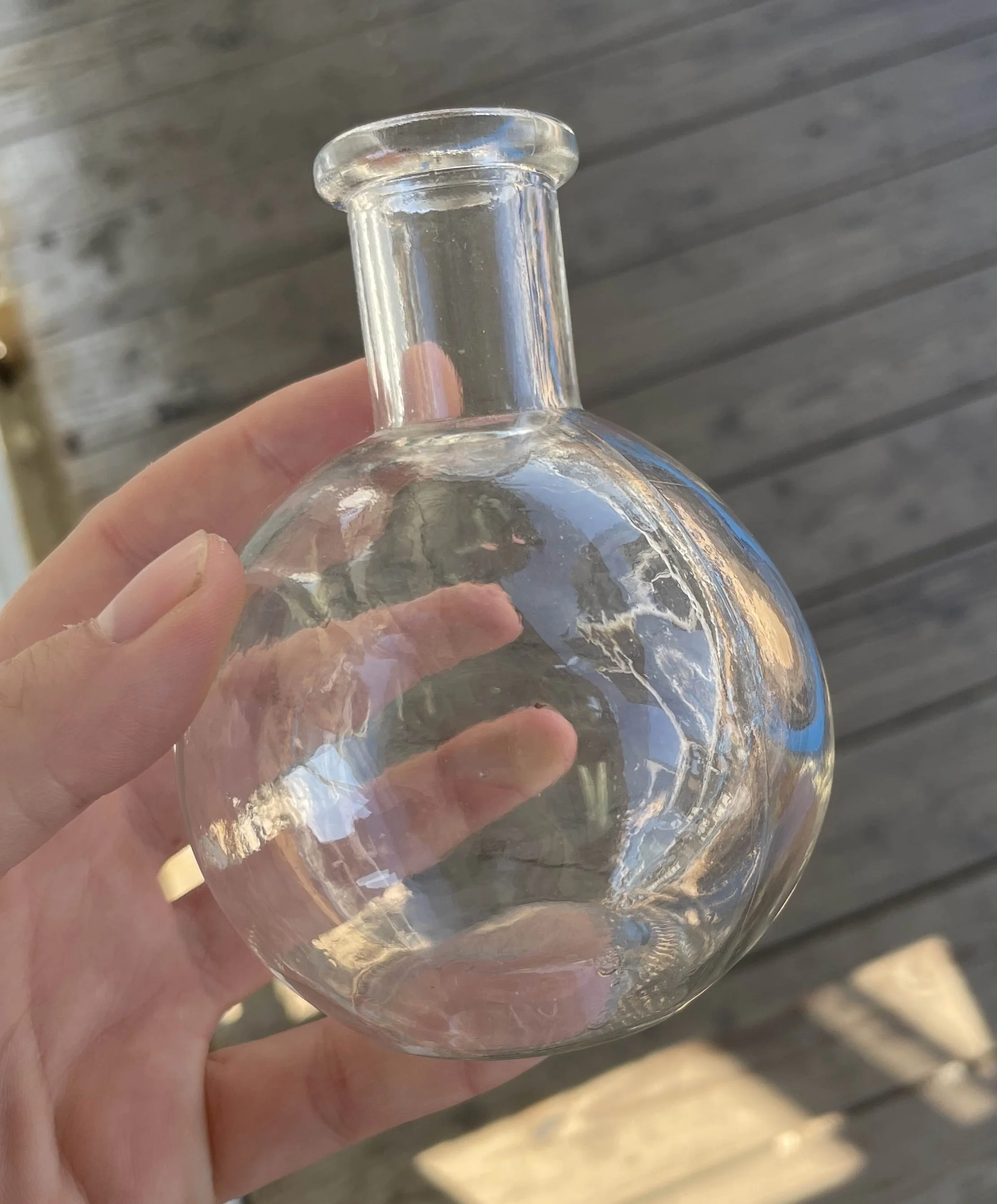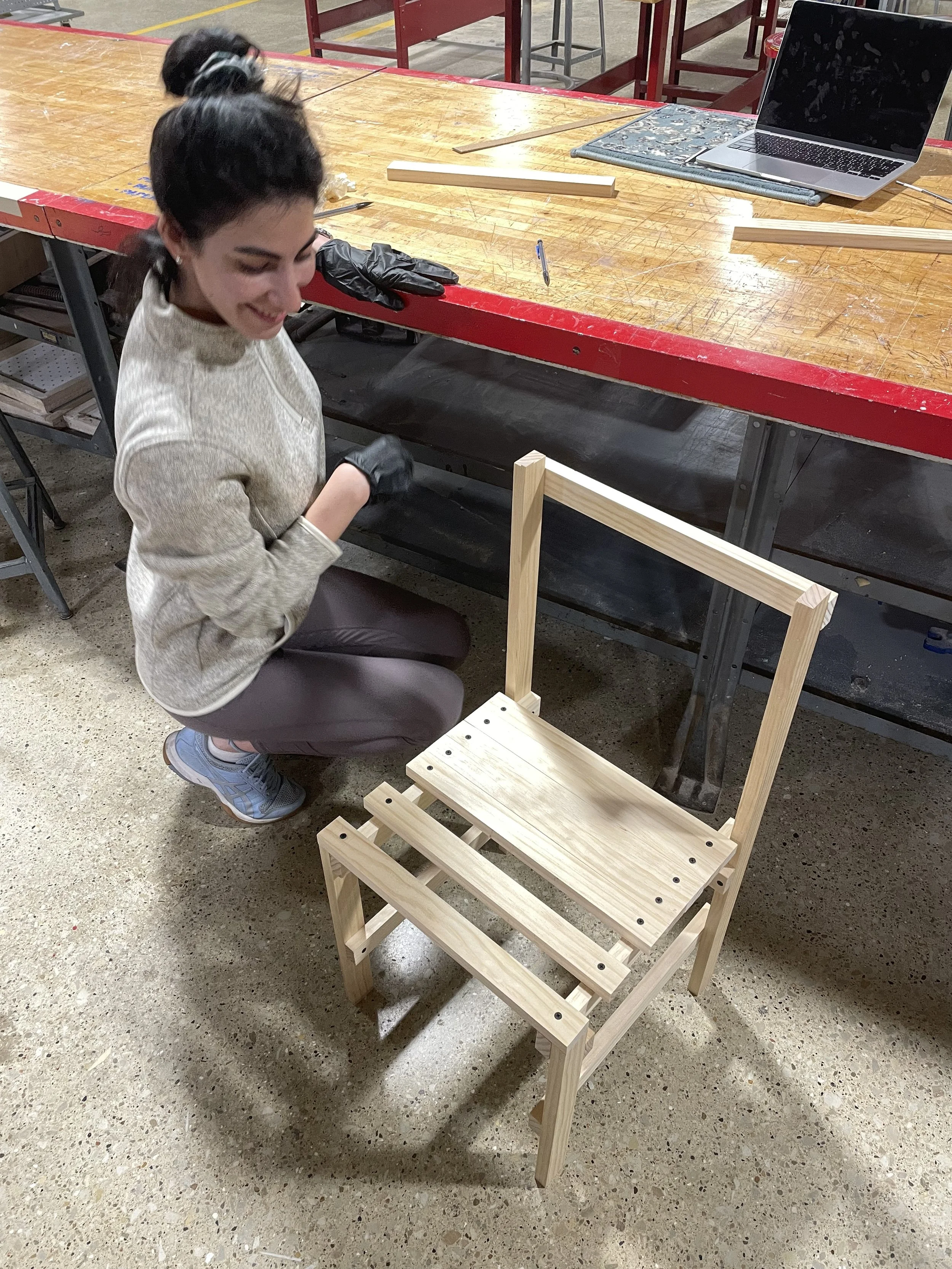
Re:Pinnstol
This chair was a collaborative design project created with my fellow newcomer cohort as part of a class led by Norman Teague. Our challenge was to reinterpret the iconic Pinnstol chair by replacing three of its original components with found objects. The goal was to celebrate resourcefulness, ingenuity, and the interplay between the chair's traditional form and the stories of the materials we introduced.
This project embodied a nomadic design approach, reflecting adaptability, emphasizing portability, flexibility, and ease of assembly while reimagining how everyday objects can transcend their usual purpose to create something functional and meaningful. It was an exercise in storytelling, materiality, and the beauty of imperfection.
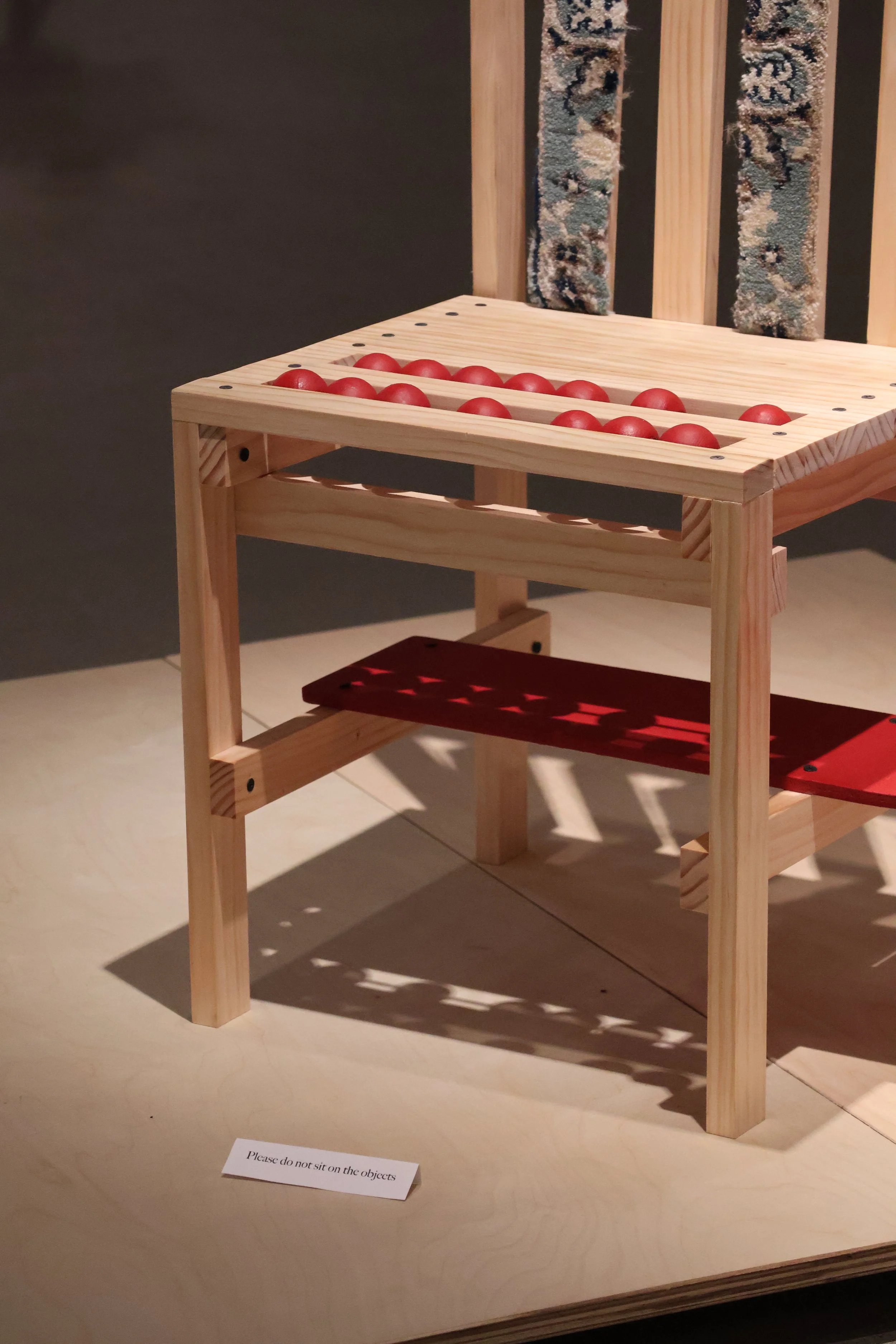
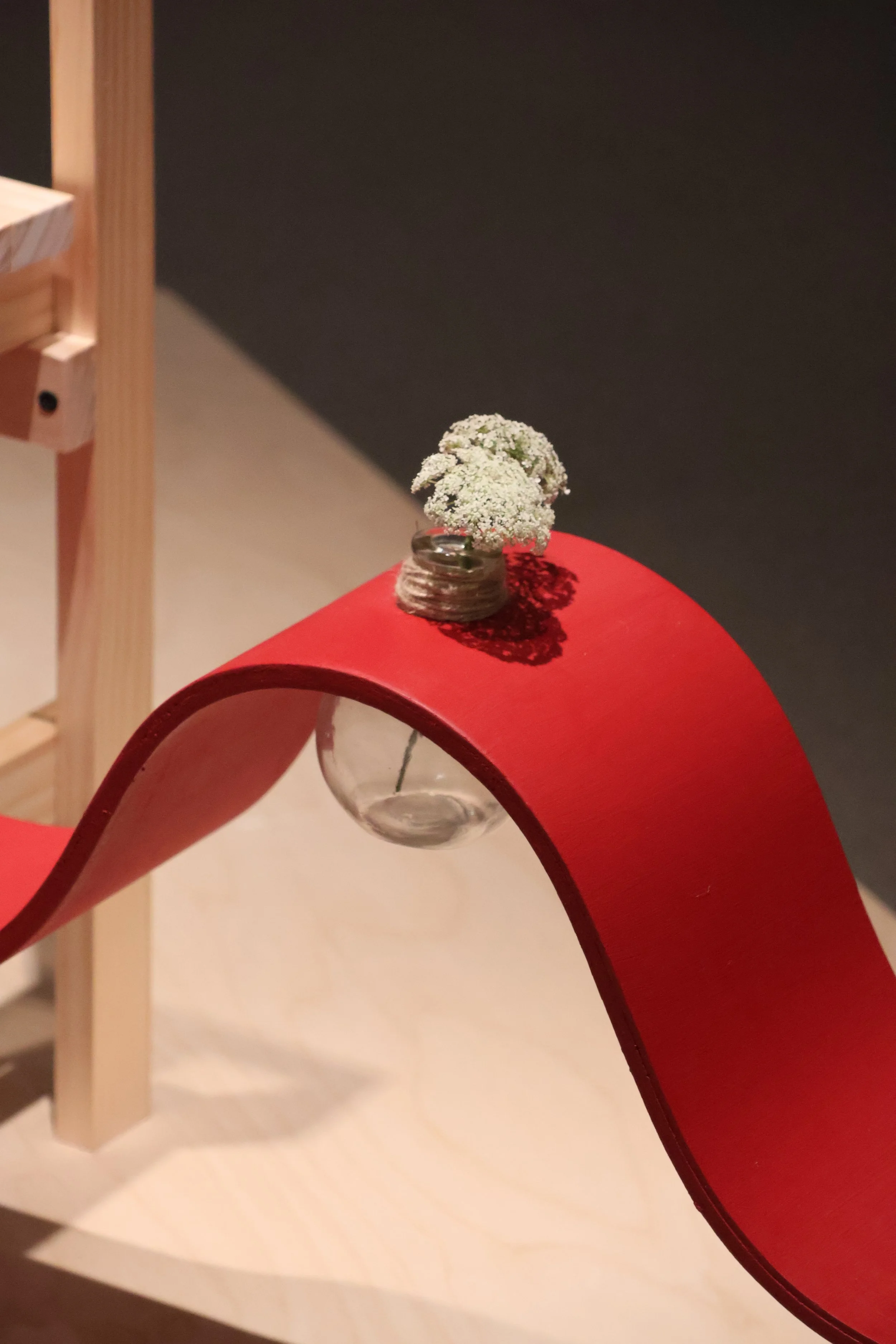
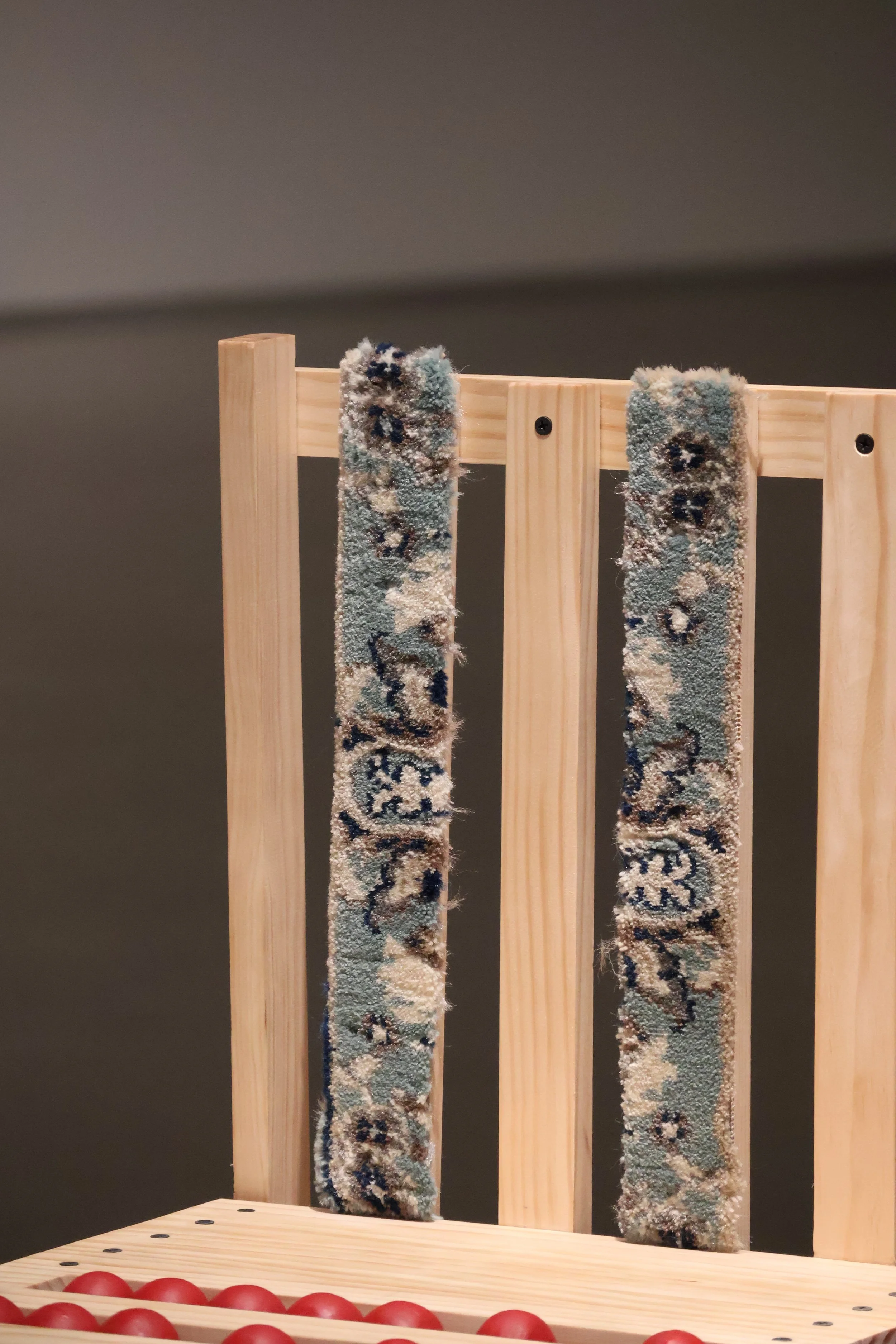
The backrest of the chair incorporates a carefully cut strap of Persian picture carpet, originally sourced for my previous project, Rasm Seating Object. In that project, I explored the tactile and cultural experience of sitting on Persian carpets as part of traditional floor seating. For this chair, I focused on the aesthetic and narrative richness of Persian picture carpets, placing it on the backrest to provide a more comfortable lean while emphasizing the heritage and intricacy of Persian craftsmanship.
A section of the seat surface was replaced with an array of painted wooden beads, inspired by an abacus. Although traditionally based on ten, the beads here are limited to six to fit the available space. This playful element showcases the charm of interaction, inviting users to engage with the seat beyond its typical function.
The final modification involves a bent plywood panel, salvaged from discarded materials. Its natural curve was highlighted with a bold red paint, making it an eye-catching feature. Positioned as an extension of the chair, the bent spot not only adds a sense of flow and prominence but also serves as a delightful pedestal for holding a vase, merging utility with greenery.
Process
The process began with the creation of a small, precisely measured prototype of the original Pinnstol chair. This step ensured we thoroughly understood the chair’s structure and proportions before constructing the full-scale version. Once the chair was assembled in its original form, we proceeded to modify and replace specific parts.
For the beads, each one was carefully scrubbed and shaped to fit snugly within the width of a single wooden piece on the seat surface. To house the abacus-like beads securely, two wooden cubes were crafted, each with a central hole for the supporting rod. These cubes were placed on either side of the seat surface, providing both stability for the beads and consistency along the seat's edge.
The bent plywood was refined by cutting and sanding it to fit seamlessly within the chair’s dimensions and overall silhouette. This meticulous adjustment highlighted the plywood’s curve, ensuring it integrated harmoniously with the chair’s design while serving as a striking feature.
Re:work Exhibition
At the Secrist | Beach
The Re:Work Exhibition at Secrist Beach, Chicago, was a collaborative showcase between Norman Teague and Bridgett Buckley's classes at the UIC Design School. Celebrating ad-hoc design and material reclamation, the event invited students to challenge conventional approaches by integrating found objects into their work. Re:Pinnstol, a reimagined chair that playfully transformed its structure with unexpected materials, stood out for its bold interpretation of functionality and cultural storytelling. This exhibition encouraged experimentation and innovation, redefining the design narrative through sustainable practices.

